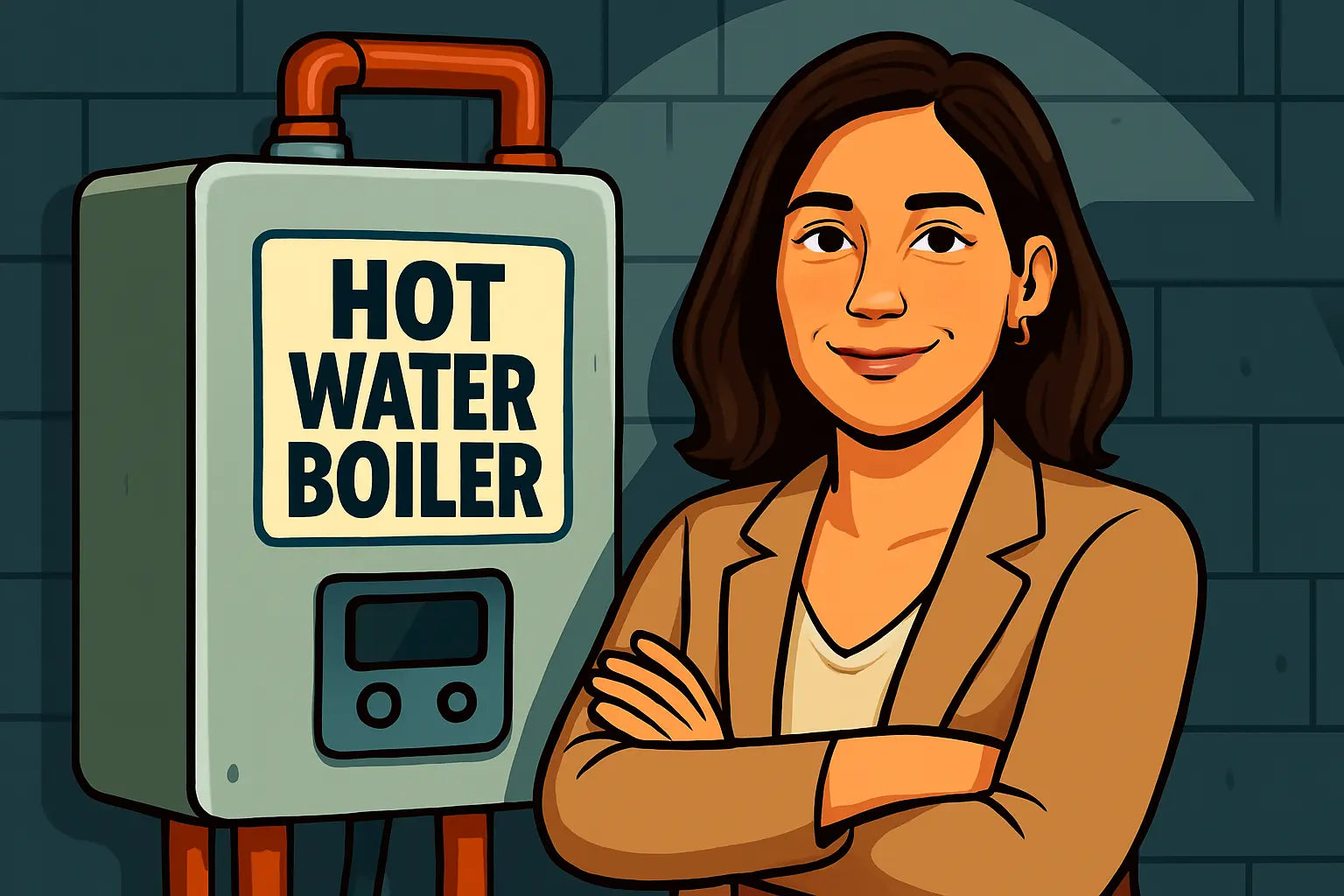Hello from Savvy Mavi
Hey, hot stuff! 🔥 It's me, your HVAC helper-next-door—Savvy Mavi. If your boiler's throwing a watery tantrum, it's time to get curious (not panicked). I’ve seen enough puddles in basements to know that most boiler leaks aren’t a death sentence—they're a wake-up call. So grab your flashlight, put on your detective hat 🕵️, and let’s dive into what’s dripping and why!
1. First Thing's First—Is It Actually a Leak?
Before jumping to conclusions, let’s make sure it’s not just harmless condensation. When your boiler’s heating water in a cold room, it can “sweat.” This is especially true in older homes or humid basements. But if the water keeps appearing or increases, we’re likely dealing with a leak.
Want a visual breakdown of the difference? This homeowner’s guide shows what real boiler leaks typically look like versus normal condensation.
2. The Most Common Culprits for Boiler Leaks 💦
a. Pressure Relief Valve Blowouts
If your boiler’s pressure gets too high, the pressure relief valve will open to release water—on purpose. Think of it as your boiler saying, “I need to let off some steam!”
Fix:
Check the system pressure. Most boilers should sit between 12–15 psi when cold. If it’s higher, you might have a faulty pressure regulator or expansion tank (we’ll talk more about that soon). You can learn how to check your boiler’s pressure in this step-by-step guide.
b. Corroded Heat Exchangers
Yikes—this one’s a biggie. Over time, minerals in water can corrode your heat exchanger. Once it cracks, water seeps out slowly but steadily.
Fix:
Unfortunately, this usually means replacing the heat exchanger. If your unit is older than 15 years, it might be time to consider a new energy-efficient Weil-McLain boiler from The Furnace Outlet.
c. Loose Pipe Fittings or Worn Seals
Sometimes it’s as simple as a loosened fitting or a gasket that’s degraded with age. Water can slowly leak around these points and drip down.
Fix:
Tighten the fittings with a wrench and inspect the seals. If the gaskets are cracked or worn, they’ll need to be replaced. Don’t over-tighten or you’ll risk stripping the threads or damaging the seal.
3. Is It Coming From the Bottom? Expansion Tank Check-In
If water is pooling near the bottom, your expansion tank could be the issue. Boilers need these to absorb pressure fluctuations, and if the internal diaphragm ruptures or loses air, it can’t regulate pressure.
A bad expansion tank = over-pressurization = leaking.
Want a solid overview? Check out this explainer on how to diagnose expansion tank issues.
4. Don’t Ignore Leaks—Here’s What Could Go Wrong 😬
Even small leaks can become major headaches if left alone. Here’s what you’re risking:
-
Mold and mildew growth in basements
-
Water damage to flooring or drywall
-
Corrosion of internal components
-
Pressure fluctuations that lead to shutdowns
Keep in mind that if you have a Weil-McLain high-efficiency model, it may also include condensate drains or traps—these can clog and overflow if not maintained properly. HVAC.com has a good refresher on the difference between a leak and a clogged condensate system.
5. When to DIY vs. When to Call a Pro 👨🔧
DIY-Safe Fixes:
-
Adjusting boiler pressure
-
Replacing pressure relief valves
-
Tightening pipe joints
-
Draining and refilling the expansion tank
Call a Pro For:
-
Leaks from inside the heat exchanger
-
Major corrosion or rust
-
Replacing the entire expansion tank
-
Repeated leaks even after fixes
Safety first! If your system is gas-powered, always shut off gas and power before working on the unit.
6. Prevention: Maintenance is Queen 👑
Want to avoid future leaks? Add these tasks to your seasonal checklist:
-
Test boiler pressure monthly
-
Inspect valves and pipes for rust or moisture
-
Drain sediment from the boiler tank once or twice a year
-
Get a professional tune-up annually
Trust me, your wallet—and your socks—will thank you.
Final Thoughts from Savvy Mavi 💁
Alright, hot shot—you made it through the drip drama. Whether it’s a cranky expansion tank or a pressure valve that’s feeling a little too expressive, leaks don’t have to spell doom for your boiler. With a little know-how, you can keep your Weil-McLain running smooth and dry. 💧
And hey, if it’s time for a replacement (or you just want to peek at what’s new), I’ve got the hookup for ya—check out The Furnace Outlet’s full line of Weil-McLain boilers right here. You're just a few clicks away from a warmer, worry-free winter. ☕🔥
Need some maintenance tips for your boiler? Visit my guide: Seasonal Maintenance Checklist to Keep Your Weil-McLain Boiler in Top Shape.
Until next time,
- Savvy Mavi 👑







